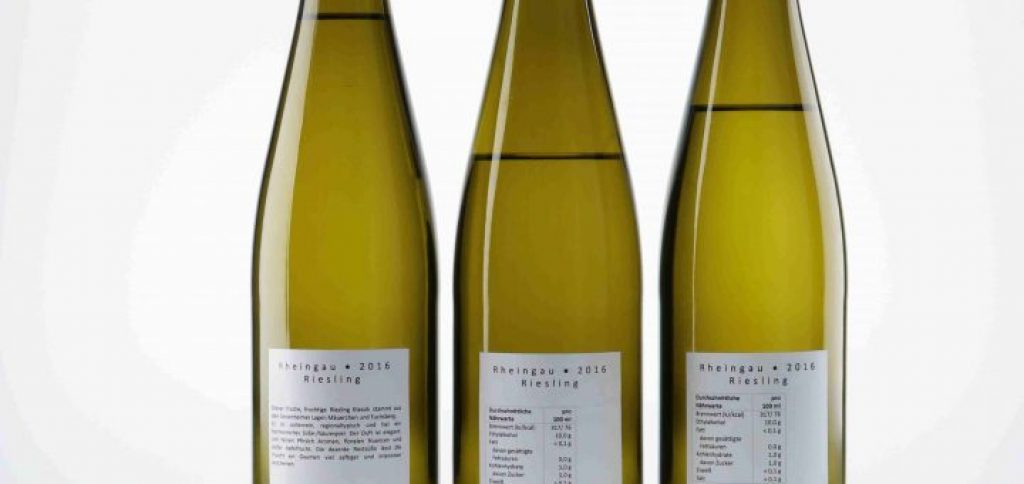Consumer information on wine bottle labels – EU seeks standardization

Alcoholic beverages and wines have always had a special status in designation law. This also applies to the exceptions regarding nutritional values and ingredients. But there may soon no longer be any exceptions. While breweries throughout the world have already agreed to print certain information on their labels, the EU Commission is now also considering standardizing the labeling of alcoholic beverages to correspond with the obligatory information that must be provided with food.
Since December 13, 2014, the Food Information to Consumers Regulation (FIC) has stipulated how consumers are to be informed about ingredients and additives on food packaging and labels in all member states of the European Union. The FIC’s corresponding by-law has also been in force in Germany since July 2017 and replaces the previous national regulation. It’s high time for the industry to consider how it plans to meet these legal requirements.
Industry proposals needed to identify ingredients
The EU Commission has given the industry until March 2018 to submit its own proposal for labeling wine, sparkling wine, beer and other alcoholic beverages throughout Europe. The challenge will be to unite the different ideas of the many alcoholic beverage producers active in Europe today. For example, the wine industry argues that wine is a traditional product, and that therefore the analytical values cannot differ too much and that consumers are already sufficiently informed about the ingredients. On the other hand, the beer lobby refers to the German Purity Law in its argument and states that beer consists only of water, malt and hops and that beer is labeled as such. The world’s three largest breweries – Heineken, Anheuser-Busch InBev, and SABMiller – have now voluntarily agreed to print calorie information on labels, thereby putting pressure on their German colleagues, who still have not reached a decision. At the moment, it looks as if there will be no agreement on the national or European levels by March regarding such different views.
Deadline for the industry expires in March – the EU Commission will then decide
The EU Commission’s Sword of Damocles looms over everything: If no joint proposal from the industry is received by March 2018, the EU Commission will take the initiative and impose a regulation on the industry according to what they conceive of to be important. The consumer organizations and their representatives are also playing an important role. They have been demanding information about the most important ingredients and additives for some time now. And this mainly from a health perspective: They state that the consumption of alcoholic beverages has an influence on consumers’ nutrition that should not be underestimated.
Labeling wine – finding the balance between informing and discouraging
Apart from information about the vintage, grape variety and origin, information on the “Big 7” nutritional values and ingredients could also be provided. These include energy value in kilojoules/kilocalories, fat, saturated fatty acids, carbohydrates, sugar, protein and salt. Including possible additives on the label is a very touchy subject for the wine industry. The large number of permitted treatment measures – in which some substances remain in the wine and in which certain substances are also replaced, increased or reduced – opens up a Pandora’s box that could unsettle many consumers. Even the information that one wine consists only of grapes, while another consists of grapes plus sugar and acids and was prepared by adding sweet grape juice, is a major challenge for representatives from wine-growing and winery associations. And they have a point, as market researchers Simone Loose and Gergely Szolnoki from Geisenheim University, Department of Business Administration and Market Research, discovered in studies they carried out. If consumers are confronted with too much information about ingredients on a label, they become increasingly unsettled and tend to choose a different bottle.
The new labeling requirements are fueled by a much more extensive discussion – namely, on the subject of “packaging and labeling”. Which type of and how much packaging or labeling may be used for factual or marketing information for either standard or semi-luxury food? For the beverage industry, product labeling of any kind, whether on soft packaging or plastic and glass bottles, will remain a fascinating subject in the future and will continue to drive the design and manufacture of saleable products.
